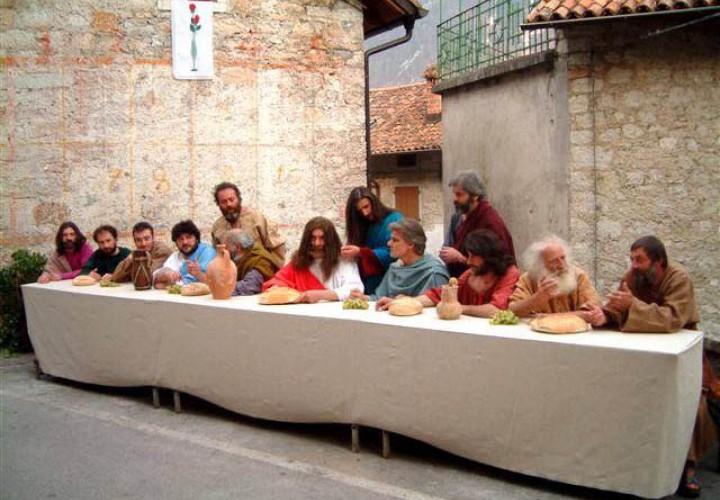Veindre Seint (Venerdì Santo)

Old and striking representation in Roman dress of the Passion and death of Christ, that takes place every Good Friday in the village of Erto in a characteristic natural amphitheatre.
Born at the same time as the little church of San Rocco, as a religious votive against the plague, it was interrupted only in the years following the Vajont catastrophe to be taken up again in 1968. This time it underwent changes of a technical nature to adapt to the new times.
The carriages were made entirely in metal and also the lances, in strict respect for historical authenticity; fabric parts were substituted by skin or leather; the costume colours were renewed for variety and set design along with other minor details, but completed the overall effect. Currently pre-announced during the preceding days by the roll of drums, "Tamburins", the Passion is preceded in the afternoon by the holy procession where the eldest man in the village, holding a staff bearing a wooden chicken goes ahead of an unshod person dressed in white and hooded so as to hide his face, who props up the crucifix of Brustolon, and at his side he is supported by another two people walking in bare feet. The evening performance starts at 8.30 leaving from the old town centre to wind towards the pre-arranged place for the main scene, on the outskirts of Erto and is made up of over fifty actors called "Cagnudei" that is Judaeans, and led by the roll of drums; they then follow the scenes cited in the dialogue, Jesus is put on trial and mounts Calvary. Between two wings of the crowd hugging the walls of the houses pass the legionnaires with torches, escorting Caiaphas with the Priests, the elderly and Pilate, while the mob continues to insult Jesus.
In a space upon a hill, near the inhabited area, the crucifixion takes place: Christ is placed on the cross which is raised up, while Longinus strikes his side with a sword and blood spurts: it is the final scene in the Holy Portrayal and all the onlookers linger for a time moved and respectful in the face of the recollection, so full of dramatic overtones for its veracity. This portrayal that is made regardless of the weather attracts ever more people from adjacent villages and lately coaches from other regions have also arrived from Florence and Puglia, of people of Argentinian, Brazilian and German extraction.
